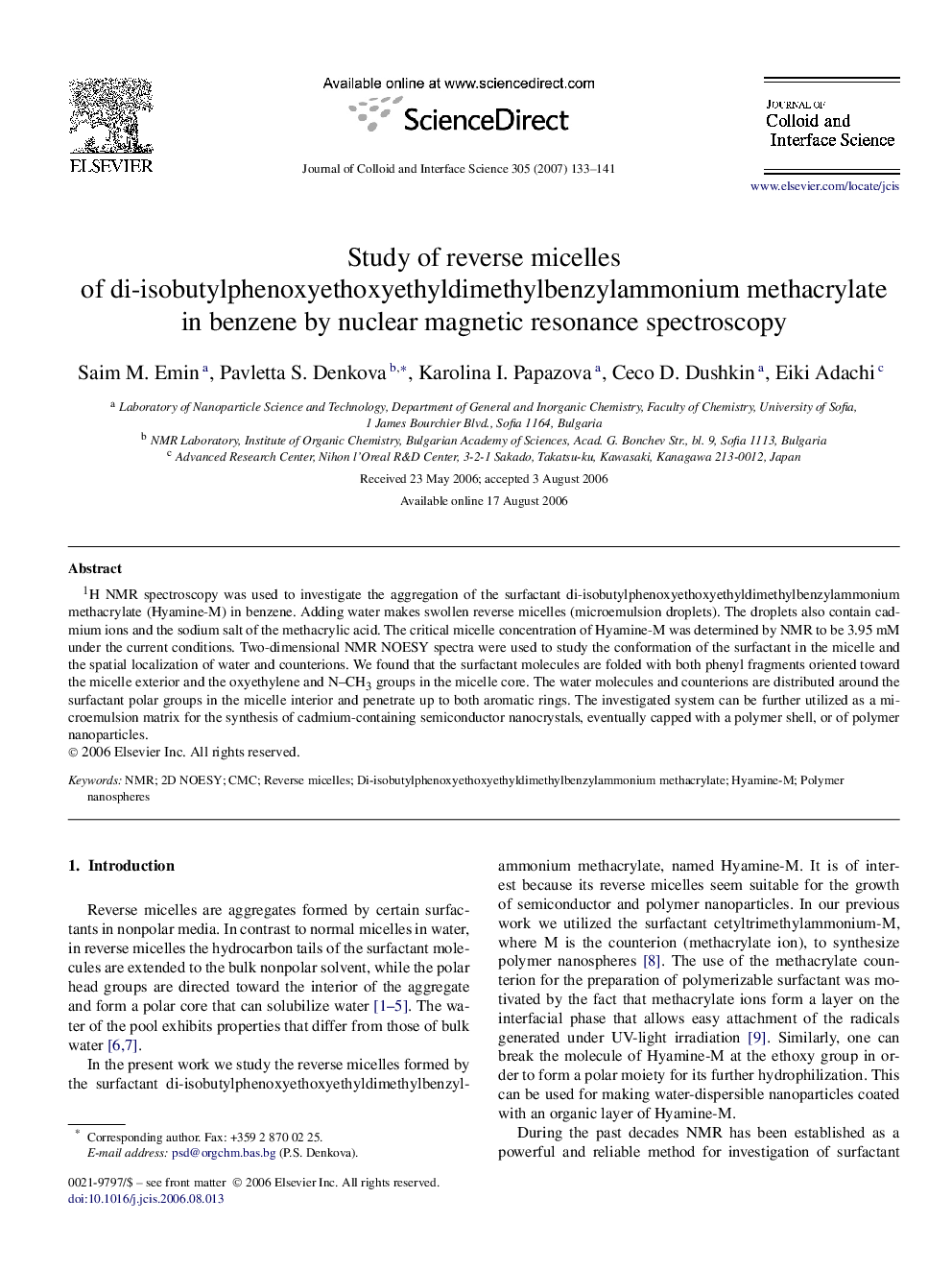| Article ID | Journal | Published Year | Pages | File Type |
|---|---|---|---|---|
| 613154 | Journal of Colloid and Interface Science | 2007 | 9 Pages |
1H NMR spectroscopy was used to investigate the aggregation of the surfactant di-isobutylphenoxyethoxyethyldimethylbenzylammonium methacrylate (Hyamine-M) in benzene. Adding water makes swollen reverse micelles (microemulsion droplets). The droplets also contain cadmium ions and the sodium salt of the methacrylic acid. The critical micelle concentration of Hyamine-M was determined by NMR to be 3.95 mM under the current conditions. Two-dimensional NMR NOESY spectra were used to study the conformation of the surfactant in the micelle and the spatial localization of water and counterions. We found that the surfactant molecules are folded with both phenyl fragments oriented toward the micelle exterior and the oxyethylene and NCH3 groups in the micelle core. The water molecules and counterions are distributed around the surfactant polar groups in the micelle interior and penetrate up to both aromatic rings. The investigated system can be further utilized as a microemulsion matrix for the synthesis of cadmium-containing semiconductor nanocrystals, eventually capped with a polymer shell, or of polymer nanoparticles.
Graphical abstract1H NMR spectroscopy was used to determine the CMC in the system Hyamine-M/water/benzene. The 2D NOESY method was applied to investigate the possible conformations of the surfactant molecules in the reverse micelles and the spatial localization of the water molecules into the micelle core.Figure optionsDownload full-size imageDownload as PowerPoint slide
